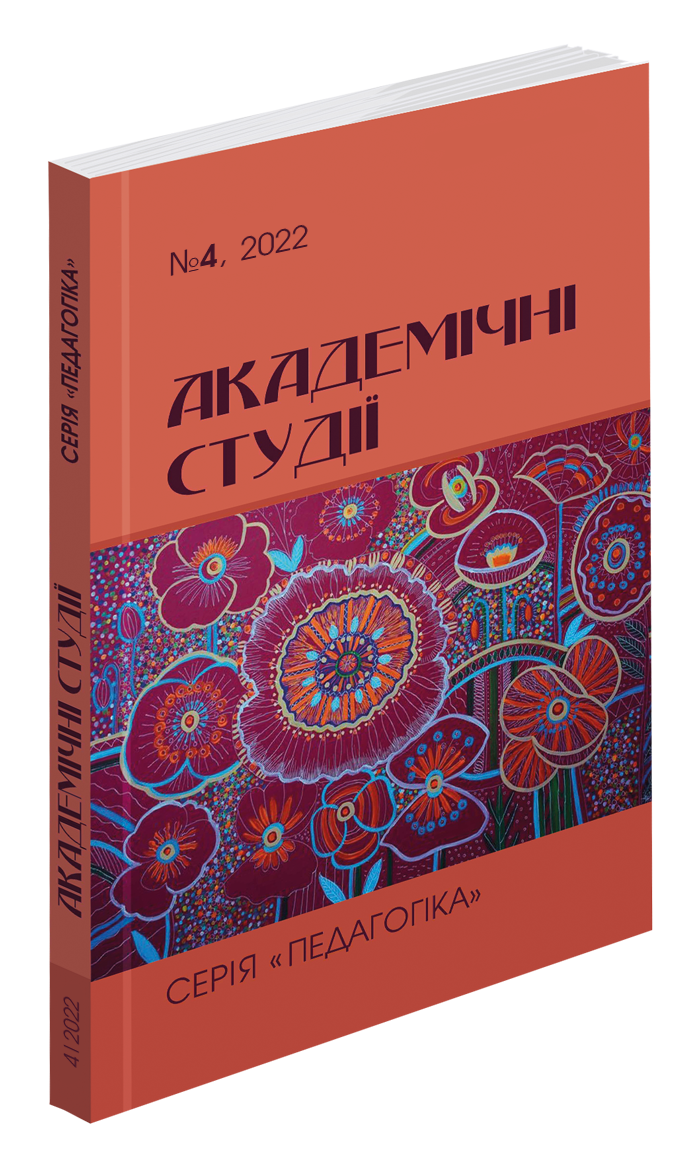Abstract
The modern system of Physical Education needs active transformations in accordance with the standards of the New Ukrainian School. As a result of the introduction of new trends in the field of Physical Culture and Sports, it is urgent to solve tasks that depend on the development and justification of innovative technologies, the mechanisms of their implementation in the practice of school work, and most importantly, the initial link of general secondary education institutions. The purpose of the article is to summarize the provisions of the scientific and methodological literature on the researched problem and to analyze the state of use of non-traditional types of gymnastics in Physical Education lessons in primary school. Research methods. The following research methods were used to solve the outlined research tasks: study and analysis of literary sources, official documents; study of practical experience and survey with the aim of studying the state of use of non-traditional types of Gymnastics in Physical Education lessons. Presenting main material. Scientific-pedagogical analysis of the current state of the use of non-traditional types of Gymnastics in Physical Education lessons in primary school allows us to assert that the methods of conducting basic Gymnastics lessons in school include traditional means (from general developmental exercises without objects, with objects to exercises in hangings and rests on projectiles and equipment), of course, remain basic. However, the present causes the appearance of new and unconventional types of motor activity in the mass Physical Culture movement. These types include: Rhythmic Gymnastics (Aerobics), Neurobics, Shaping, Stretching, Wushu, Hatha Yoga, Breathing Gymnastics, Gymnastics for the eyes, Children's Fitness, Logoaerobics, Animal Aerobics. Conclusions. Non-traditional types of Gymnastics give us the opportunity to fully realize various tasks of Physical Education at school, not only to strengthen health, increase the functional capabilities of the body, develop motor skills, skills and qualities, as well as to form a worldview, to provide moral and ethical education. Based on these possibilities, non-traditional types of motor activity have great pedagogical potential, especially when working with modern children.
References
Аксьонова О. Нова фізична культура або школа розумного руху. Теорія та методика фізичного виховання: наук.-метод. журн. 2010. №12 (74). С. 29–34.
Ареф’єв В. Г. Єдинак Г.А. Фізична культура в школі (молодому спеціалісту) : навчальний посібник. Кам’янець-Подільський : ПП Буйницький О. А., 2007. 248 с.
Зюкова Г.І. Фізкультурно-оздоровча робота в початковій школі. 1–4 класи. Х. : Вид. «Ранок», 2009. 224 с.
Неведомська, Є. Формула здоров’я : сторінка методиста. Основи здоров’я та фізич. культура. 2007. № 5. С. 20–23.
Нова українська школа: концептуальні засади реформування середньої школи. Рішення колегії МОН України 27 жовтня 2016 року. 40 с.
Носко М., Єдинак Г. Передумови персоналізації в розвитку координації учнів початкової школи. Вісник Кам’янець-Подільського національного університету імені Івана Огієнка. Фізичне виховання, спорт і здоров’я людини: Випуск 14, 2019. С. 36–40 doi: 10.32626/2227-6246.2019-14.36-40.
Фізична культура. Навчальна програма для загальноосвітніх навчальних закладів. 1–4 класи.

